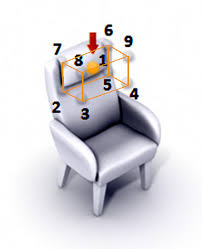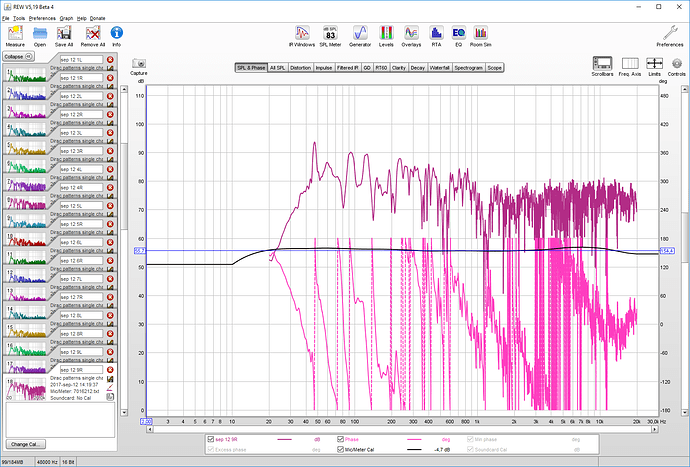I’m using these Home Audio Fidelity filters and I’m very happy with them. Earlier I have used PEQ, Dirac, and Acourate, but I think I prefer the Home Audio Fidelity filters. Acourate is pretty good too.
Planning to… just if I ever get a window to measure!
I’m planning on trying it as well. Just need to carve out some time for the measurements.
I know about 8-10 testimonials on the French Hifi Forum, where Thierry beta-tested his solution.
I have not seen any negative report. The “worst” I saw is one member found the HAF correction comparable to what he was able to achieve with REW/Rephase. I know his room is acoustically treated and dedicated to hifi.
+1 to the service here. Got mine today. Thierry was great through the process (I had some issues with the timing on the measurements on one channel). I’d tried a few other methods before and they were all improvements on the non DSP sound, but can happily say that these ones are, in my opinion, orders of magnitude better. 159 euros to breathe new life into my kit - money well spent.
I started out interested in what they could do, but skeptical that they could make enough difference to warrant it. I am happy to have been wrong 
Good to see all the positive experiences. @anon73739233, can you tell us a bit more about your speakers and room, and how you would qualify the improvements of HAF filters ?
The room is about 5m x 3m. I use it mainly as a home cinema room, but has a large fishtank in it (with 2 large external filters and spray bar… so a fair bit of noise there). Other than that, an L shape sofa in the one corner (so finding a “sweet spot” is a challenge). In terms of audio kit, I have an Allo Boss player into a Sony AV Receiver (STR-DN1040) and Kef KHT1005 speakers. Nothing high end, and a challenging room. The sound was more geared around movies - and tended to be quite boomy.
Since applying the filters the sound is “thinned out” in the sense that it is easier to identify individual instruments. Drums sound more acoustic and bass guitar has more presence. The sound is wider and deeper in space - the instruments sound like they aren’t coming from a point in the room, but more immersive. There is also a clarity in the sound so you pick up details you hadn’t heard before.
I think I had a pretty drastic improvement because the room and the system weren’t really designed around audio.
Thank you @anon73739233 for this detailed report, goes along the other testimonies on this thread and others. The beauty of these HAF filters actually is that the worse the room, the greater the benefits !
I think so… Instead of spending 160 euros in filters, I should have spent about £500 on wall treatments, £1500 on new speakers, the same for a new amp. £1000 for a better dedicated DAC…
I figured that with how bad the room is, the filters would be a compromise and because of how much they’re affecting the sound, I shouldn’t expect them to sound great. But they do. Sure, blowing £5000 might have been a better route. Not for me though.
Treating the room is ridiculous expensive, even those foam bass traps are like $50/piece, and in my room I would guess I need like 20 of them, not to mention diffusors, side wall absorbents, roof absorbents and so on. And even then, digital room correction would improve the sound (not as much as in my current room though).
Ah, but if you’d treated your room you’d be able to have friends around and talk about how ridiculously expensive it was, but how the sound is so much better… my interconnects cost a fortune, but when they’re treated in unicorn urine, what do you expect…
I’m working from home today and moved out my office to sit in the cinema room and have listened to music non stop all day. And THAT is the main thing - its made me want listen to music. Plus the beauty of DSP is I can do A/B tests by turning it off. Rather than having to kid myself that the room sounded so much worse before I stuck egg boxes on the walls. 
Yea, A/B tests with room treatment is kind of messy to say the least, especially when you need to glue the treatment to the walls 
Still, all things considered, to get the absolute best possible sound quality you need good room treatment. Digital room correction can improve the sound a lot, but it won’t turn your living room into a mastering studio. My view is that they complement each other
“Its made me want listen to music” --> +1 here
It’s been weeks since I uploaded the HAF filters, and it’s difficult to hit the “stop” button and go to bed in the evening… One highly experienced member on the French forum qualifies the filters as “addictive”.
I also realise I can listen at higher volumes without listening fatigue, and keep discovering previously masked details and textures on records I had listened a hundred time.
My subjective perception is that the music “flows” differently in the room and the house, its more natural, more integrated. The war between the speakers and the walls is over, even at (very) high volume.
I received my filters back late last night. The comments I sent back to Thierry aren’t NSFW/nice for posting on an open thread, besides there are lots of other “audiophile” type words I should use instead, but 2 words came to mind immediately, ‘liturgical profanity!’ (Replace ‘liturgical’ with ‘Holy’) you get the point.
The filters are still new to me, but so far I love what I’m hearing.
100% agree with @anon73739233
Give me a few days and I’ll try to provide a more detailed report.
And insanely expensive if you actually want the room to look good. You either have to get uber designer pieces of treatment with audiophile pricing that is not far off buying Monets at auction, or practically rip your room down and rebuild it smaller with all the treatment hidden.
To be honest when I see most people’s system pics with bass traps and ceiling and wall panels ruining their lounge I shudder - so ugly! (No offence intended to anyone who’s gone this route obviously). I know it probably sounds great, but…
Thing is, if you’ve got a bad room and can run DSP of any sort, chances are you’ll get way better results than just spending money on better kit. I.e. You’ll maximise the kit you have. More expensive kit (untreated) may be better, but it’s full potential will still never be heard.
Ok, room treatment is the ultimate as once it’s done you can put anything in the room and it should sound good, but IMO it’s just not worth bothering unless you’ve got a dedicated room or make music for a living. DSP’s ‘good enough’. And ‘good enough’ is really good IMO and clearly only going to get better.
That said this has been an expensive month for me with other things, so time aside I’m sticking with my REW filters for now but I know I want these new ones.
I got the Home Audio Fidelity filters today. I agree with most that have been said here about them. Much bigger soundstage. Easy to pinpoint instruments and voices in the room. Bass is much more tight. I have of course been trying to A/B test and listen with an analytical mindset but I keep loosing myself in the music because it sounds so damn nice and involving. I guess that is the biggest compliment I can give the filters.
My speakers is a pair of active Genelec G Four’s and the F Two sub so its not high end but its still very easy to hear the improvement. I also have Dirac Live which I find good too but with Dirac I have to tweek the target and raise the low end for it not to become sterile and thin. With the HAF filters I got what Thierry calls the stadard curve with standard/neutral tonal balance and I dont miss anything in the sound. The other advantage over Dirac is that I can now drop the (for me) unstable virtual soundcard from Dirac and run everything from inside Roon. And as a nice bonus I can finally have networked endpoints and room corretion together (happy days:)
The downside of the HAF filters compaired to Dirac is that I can’t tweak anything now but I also don’t feel the need as I could not have tweaked my way to this sound level with Dirac. My speakers are on wall mounts (I know I know they should be on stands away from the wall:) so they are locked in position and I or my two-year old son don’t accidentally move them messing up the filters and measurements. Therefore Im not so worried about the finality of doing room correction this way.
The hardest part of this process is the measurmets. Theirry was helpful but a foolproof guide to measurments in REW would be a nice addition to his site. It’s not that its a very complicated process but there are a lot of possiblities in REW and its easy to get unsure about ticking all the right boxes and getting the best possible mesurements.
As someone who will also be taking measurements to send to Thierry in the next couple of weeks I’d also warmly welcome this. I know there’s a guide on the Roon community forums for using REW but I think a precis for taking the relevant measurements required for HAF (for me, I was planning on taking 9 measurements per channel) would be helpful 
Here is a mini guide for doing measurements to Home Audio Fidelity using REW
- Use step 1 - 4 in the REW guide: A guide how to do room correction and use it in Roon
- Then you need to perform a number of sweeps, which is done with the top-left button called “Measure” in REW. This can be done in many ways but I recommend the way Dirac does it, by doing a sweep for left channel and a sweep for right channel on each of the positions in this picture:

- Name each measurement according to the position in the picture, and also with L or R for left or right speaker. Once done, it should look like this:
- In REW, save everything to a “.mdat” file with the “File -> Save measurement” menu, and thats the file you need to send to HAF, either with the contact form or with an email (I used the contact form and that worked good). Also attach or explain the picture of how you did the measurements.
Perfect! Thanks Magnus.
After evaluating a test file, I ordered the filters today, choosing the crosstalk reduction filter. To me it has a marginal better stereo image. Overall the filters makes the bass tighter and the lower midrange clearer and roomnodes are mostly gone. The filters doesn’t changes the overall character of the speakers, and that is just good.
Thierry was very helpfull, as I ran in a few problems (usb to optical converter causes pre-ringing).
Now I’m looking forward to get the filter and explore my music again.

